Saskatchewan anglican
newspaper of the Dioceses of Saskatchewan, Saskatoon and Qu’Appelle • A Section of
galore at St. Andrew's, Humboldt


newspaper of the Dioceses of Saskatchewan, Saskatoon and Qu’Appelle • A Section of
galore at St. Andrew's, Humboldt

By Rev. Jesse Miller
MAPLE CREEK (Qu’A)
— On Aug. 17, the congregation of St. Mary the Virgin Anglican Church rang their church bell once again.
This day marked the celebration of St. Mary the Virgin as well as the completion of the new bell tower. This restoration project began years ago, with consultation to figure how to restore a deteriorating tower.
The restoration work started on July 7, when the tower was taken down in pieces, saving the bell
and the steeple.
Rain and unexpected challenges extended the project from a week to a month.
Over the next month, the crew reinforced the internal structure of the roof, installed the new tower frame, put back the bell, topped the tower with a restored steeple, and added new louvres to keep out the rain.
The St. Mary congregation thanks everyone who helped with the bell tower restoration. In addition to all the contractors and suppliers, they thank

their grant partners at the Saskatchewan Heritage Foundation, which gave a grant of $27,975, and the Anglican Foundation of Canada, which provided a $13,000 grant.
They also want to thank all the diocesan members and Maple Creek residents who donated to their fundraisers.
Many church members have orchestrated and contributed to numerous fundraisers, including the men’s beef supper, the yard sale and the beef-ona-bun lunch.
After all that hard
work, more funds are needed to cover the bell tower restoration. The weather and other factors set this project about $30,000 over budget.
There will be local fundraisers, and people can also donate through the mail to St. Mary Anglican Church, Box 1568, Maple Creek SK S0N 1N0 or online (e-transfer stmarysmcfinance@ gmail.com).
More information about donations can be found at https://www. stmarysmaplecreek.ca
For more pictures, see page 6.
By Mary Brown
PRINCE ALBERT — It was a cold blustery day in June for the 150 th anniversary celebration of St. Mary’s Church.
The Right Rev. Richard Reed was the celebrant for the service of Holy Communion, taken from the 1662 version of the Book of Common Prayer I was curious to see what the difference was between the version in our pews today and this older version. The bulletin had the whole service printed in it, as I expect there were not any copies of the 1662 BCP.
The 1962 book follows the original book and the only differences were in some of the language such as “Come unto to me all that travail and are heavy laden, travail being replaced with labour.
And in the intercession, “We beseech thee also to save and defend all Christian Kings, Princes and Governors and especially our servant Charles … that under him we may be godly and quietly governed and grant that those in authority may truly and indifferently minister justice, to the punishment of wickedness and vice.”
After the intercession, in our book, we are asked to confess our sins, but in the original book the priest says an exhortation considering how St. Paul spoke to all persons diligently to try and examine themselves, to be sure they do not receive the body and blood of Christ
Continued on page 5

How do you make sense of the Trinity?
By the Rev. Dr. Laura Marie Piotrowicz
It seems fitting, as I write this on the Feast of St. Augustine, to share how Augustine himself struggled to articulate the mystery.
In a treatise that took him more than 16 years to write, Augustine describes three persons as one, each with individual work, while working together.
“Father does some things, the Son other things, and the Holy Spirit yet others.”
God the Father: who created everything, light and dark, the heavens and the earth, land and sea, birds and fish and animals and plants and rocks, what we see and what we don’t, what we know and what we cannot comprehend, and our very selves.
God the Son: the redeemer, whose life and lessons and ministry reminded us of the mission to love one another, whose death and resurrection is an ongoing reminder that we have been promised the gift of forgiveness, salvation, eternal life and redemption.
God the Holy Spirit: who lives and moves among us, inspiring us to think, say, and do what is right, who is our promised advocate, the breath of God, the wind over the waters, the supporter of our communion and peace, the being that sustains us.
For millennia, we have tried to understand, explain, and unpack the

mystery of the Trinity; if we are honest with ourselves, we have all fallen a little short of the goal.
We’ve studied the creeds, whose articulations increased in word count and definition, while missing the mark on one clear explanation.
Countless theologians have written countless tomes, again demonstrating great love for, but inadequate words for, the Trinity.
Thankfully, we no longer live in a society that will deem us heretics if we slide into Modalism, Tritheism, or Arianism. Still, preachers face the challenge of balancing orthodox teaching while seeking new and creative analogies each year.
Regardless of our efforts, no human description can do justice to the Triune God.
Rather than be stressed
by this, I embrace the unknowingness and instead celebrate the mystery. Dwelling in the mystery, for me, means learning to be comfortable with a faith that sometimes is stronger, and sometimes is a bit weaker.
Sometimes we have doubts or distractions or questions.
I trust that it’s OK to have doubts; that God knew in loving us into being that we could not comprehend the divine mysteries.
Doubts don’t mean that we have lost our faith, but that we’re doing our best to apply our faith to life’s circumstances at this moment.
Doubts or questions mean we’re actively trying to understand things better.
And so, despite the mystery of the Trinity, perhaps because of its mystery, we believe. We may have doubts, but we believe more.
We may have questions, but our belief sees us through those questions into that reality: that risky, comforting, joy- and hopefilled reality called faith.
And God is with us. The triune God who created and continues to create, who taught of sacrifice and love and promises redemption, who inspires and supports and sustains.
The God who knows our doubts and our questions, who doesn’t mind that we will never fully understand or articulate the mystery of the Trinity. The God who knows in our hearts that above all, we believe.
By Mary Brown LEASK (Skwn) —
Muriel Young, who received the Order of Saskatchewan in 2007, died on Aug. 26 at 93.
She and her husband Robert married and lived at the farm in Mont Nebo, where they raised three boys. She lived there until July.
Once her sons had grown and moved away, Muriel decided to get her driver’s licence, which gave her the freedom to take a more active part in her
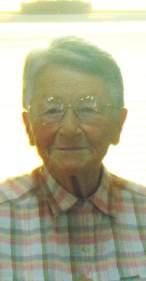
church. She became a lay reader and helped with keeping St. Luke’s Church open, organizing Sunday services and keeping the yard mowed and the church clean. She was also a faithful
member of the ACW and attended all the annual and deanery meetings and Camp Okema outings and represented her church at diocesan synods.
Sadly, Muriel was not able to help with the upkeep of the church in vthe last few years and it went downhill, especially following a few years of destructive bad weather.
She attended the 100 th anniversary of St. Luke’s a few years ago.
Once a year, the parish of Leask/Shellbrook would gather for a



Published by the Dioceses of Saskatchewan, Saskatoon and Qu’Appelle. Published monthly except for July and August.
Whole No. 292, Vol. 54 No. 2 A Section of the Anglican Journal
SUBSCRIPTIONS
For change of address, undeliverable copies and subscription list updates, contact:
• Your parish
• e-mail: circulation @national.anglican.ca
• Or send to Saskatchewan Anglican, c/o Anglican Journal, 80 Hayden Street, Toronto, Ont. M4Y 3G2
RATES $10 in Canada $17 outside Canada
SUBMISSIONS
Submissions for the December issue must be received by the diocesan editor no later than Oct. 26 All pictures must be sent as JPEGS and 1 MB (megabyte) in size.
CONTACT
INFORMATION
Managing Editor: Jason Antonio SKAnglicanEditor@gmail. com 1501 College Ave Regina, Sask., S4P 1B8 Phone: 306-737-4898
Qu’Appelle: Joanne Shurvin-Martin joannesm@myaccess.ca 6927 Farrell Bay Regina, Sask., S4X 3V4 Phone: 306-775-2629
service and picnic in this lovely old church.
Muriel was buried in the well-kept cemetery adjacent to the church.
"As Muriel departs from this earthly realm, her essence lingers — a whisper on the wind, a ripple on the water — a testament to the enduring power of love to transcend the boundaries of life and death," her obituary said.
"Though Muriel may no longer walk beside us, her spirit lives on in the memories and the legacy Muriel leaves behind."
Saskatoon: Rev. Peter Coolen ptrcoolen@sasktel.net 820 Avenue I South, Saskatoon, Sask., S7M 1Z3 Phone: 306-244-0935,
Saskatchewan: Mary Brown mary1949brown@gmail.com Box 25, Shellbrook, Sask., S0J 2E0 306-922-5159
Advertising agent: Angela Rush saskatchewan.anglican.ads@ gmail.com 905-630-0390
PUBLISHING DETAILS Published from 59 Roberts Place Regina, Sask., S4T 6K5
By Right Rev. Chad McCharles, Bishop of Saskatoon
Bell towers have been used for centuries as navigational landmarks, both on land and at sea, but their sound are markers too. In Italian culture there is a widespread and fiercely held belief called companilismo, which is derived from the same Italian word for bell tower: campanile.
Companilismo is the belief that you belong to the area within earshot of your bell tower and generally carries with it an overall sense of pride for one’s hometown, local customs, hometown teams, and dearly held local traditions.

Companilismo is an archetype of community centred on that which calls us to worship and draws the human heart towards God and His Church, even if one has no intention of crossing the threshold of a worship space.
In small villages all over the Italian countryside, this belief is manifested as people gather at long, communal tables in their town square, in the shadow of their local church’s bell tower for communal feasts.
They gather in the evening, sharing their food and wine family style, with music and
laughter filling the air just as the ringing of their church bell does every day of their lives, and has done for generation upon generation.
This tradition rings out reverberations of belonging and family that echoes deeply within the human heart that needs to know this sense of place.
For us as Christians, our salvation by the sacrifice of Christ rings of this truth we yearn to hear and know, as we are called home to the heart of God through His Grace and Mercy that overflows from the wounds of our Saviour.
The term “hometown” is certainly not defined by the Canadian census population bracket, but rather, is more accurately defined as the community where your heart was raised up, or where you feel most at home.
The numerical size of a community is not what defines community — a truth our parishes
would affirm wholeheartedly, and one that rings true for me.
When I was small enough for the weight of our home parish’s bell to lift my feet off the ground when hanging onto the rope, my great-grandfather taught me to ring the big church bell at St. Paul’s Anglican Church in Shoal Lake.
A tradition passed down to him by his father, and where he taught his son, my maternal grandfather, to ring the same bell.
As a wee lad, the ringing of the bell quickly became the reason why I wanted to go to church, because I had an important job.
It felt important because I knew the sound I was making was heard throughout our small town, and that it was very much a part of the life of our parish.
It made me feel like I belonged and was valued. To this day I consider myself an amateur campanologist, and strong proponent for our churches to ring their church bells often!
Certainly, each time we hold a worship service, just as the Book of Common Prayer rubrics instruct us to on page lvi: “it is desirable that the bell should be rung, in order that the people may come to take part in the Service, or at least may lift up their hearts to God in the midst of their occupations.”
But we need not limit our bell ringing to that, not when we can ring for births and birthdays,
anniversaries, Canada Day, and various Royal events of note.
You simply do not know who will have their heart turned and lifted towards God and the Church when hearing our bells ring out.
And if the practice has fallen by the wayside in your parish, why not invite a child or young person, or someone who sits quietly in the back pew and avoids getting involved, or friend of any age, to ring the bell?
Or, even more radical, put a notice in the newspaper or on Facebook inviting anyone interested in ringing the church bell to come and learn and start ringing!
In a time when the human family is becoming increasingly polarized on multiple fronts, the Church has an opportunity to manifest the beauty of community centred around Christ’s call to unity and peace.
Centred around our identity as a communal people, gathered at table, with the ultimate feast before us, waiting to hear the beautiful, familiar, clear ringing voice of God in whom we have a place of belonging now. Where we are safe and fiercely loved.
Not one of us is ever out of earshot of the echoes of God’s love. Therefore, we are all loved, and we all belong.
Let us ring out this truth in how live and love as the Church.
By Mary Brown
PRINCE ALBERT —
Bishop Charles Arthuson died peacefully at his home in Prince Albert on Aug. 30 at age 88.
He was ordained suffragan bishop for the Diocese of Saskatchewan in 1989 and retired in 2008. As with clergy who retire, that doesn’t mean they quit their ministry.
He was honorary assistant at St. George’s Church in P.A. and the Legion padre, which meant he did the opening prayers at various functions such as July 1 ceremonies and Remembrance Day events. If asked, he would also do Legion burials.
St. Andrew’s Church in Shellbrook were lucky to have him take services in their parish when they were between ministers. In his sermon at a service
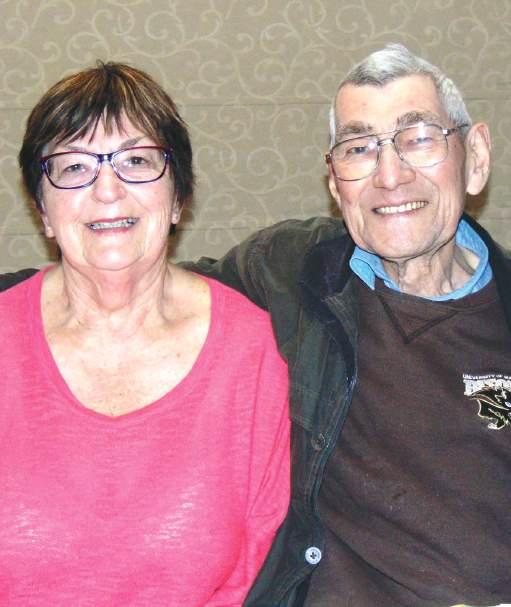
he took in St. Andrew’s, he told a story of a faithful dedicated lay reader who helped in one of his previous churches.
To Bishop Arthurson, the best part of his story was how this man died. He died in the church on a Sunday morning, which he told us is how he would like to end his days.
There are many tributes to Arthurson that are a testament to his story.
In his tribute, Bishop Anthony (Tony) Burton recalls that when Arthurson was elected as bishop he retired to his church in La Ronge, where he locked the doors and spent the day weeping uncontrollably, as he took the historic responsibility that had overtaken him.
He knew his calling was to eschew ideology or easy answers and instead to focus on Jesus Christ.
He was a man of granite integrity, who knew both who and whose he was.
In his tribute, Bishop Michael Hawkins recalls that Arthurson was hard-working and straightforward with a wicked sense of humour. He did not always suffer fools gladly, but he served gladly over decades and took the weight and responsibility of ordained ministry seriously. He saw himself as Christ’s faithful soldier and servant to life’s end.
Even though I did not see him as much others, I always knew if I went to a diocesan function he would be there, and we would meet and he would shake my hand and ask how I was and then ask how Mr. Brown was. He has a special place in my heart, and I will miss him dearly.
g Saskatchewan Anglican online! Did you know you can read current and past issues of the Sask. Anglican online?
Visit www.anglicandiocesesaskatoon.com/saskanglican or on Facebook at www.facebook.com/saskatchewananglican
g ERRATA: In several past issues of the Saskatchewan Anglican it was announced, in error, that Elliott Lou would take over the co-ordination of the Saskatoon Anglican School of Discipleship from the Rev. Dr. Trish McCarthy. This was incorrect and we apologize for any inconvenience this may have caused.
g Christ Church Anglican, Saskatoon: Celtic Eucharist, Tuesday at 7:00 p.m.; Community Free Supper, 5:00 to 7:00 p.m., (once per month, usually third Tuesday, 5-7 pm. check for dates and times); Community Coffee House, every Wednesday, 10:00 a.m. to noon.
Also, Nutflakes Videos (video lending library), Friday and Saturday 11:00 a.m. to 2:00 p.m.; Free Bread Program, Friday mornings; Men's Shed meetings, Thursdays, 7 p.m.
g Courses at the Refinery: The Refinery at Emmanuel Anglican Parish is offering a series of courses during the Winter 2024 season on a variety of subjects including painting and various other art media, Zumba, and various spiritual and meditative modalities. For more information on the various courses
offered or the “Painting Table” or to register, please contact the Refinery at: www.emmanuelrefinery.org or 306 653-3549.
g Fall Lutheran Anglican Gathering 2025: The Fall Lutheran Anglican Gathering (FLAG) 2025 will happen Tuesday, Sept. 23 to Thursday, Sept. 25, at Temple Gardens Spa, Moose Jaw.
The guest speaker this year is Rev. Dr. Kyle Schiefelbein-Guerrero with the topic “Interconnected Leading with/ for an Ever-changing Church.” Information on registration may be obtained from the Saskatchewan Synod ELCIC.
g L.A.W. Retreat Day 2025 is Coming: The annual Lutheran Anglican Women’s Retreat Day will be held at Redeemer Lutheran Church, Saskatoon on Oct. 18. The theme for this year’s meeting is “Christ Be Our Light”; the speaker will be Rev. Dr. Ann Salmon. Cost is $20 per person (please bring your own lunch).
To register please contact Bev Otsuka at bevotsuka@gmail.com.
g Hospital Chaplaincy: A friendly reminder to all Anglicans who find themselves being admitted to any hospital in Saskatchewan.
Upon being admitted you are supposed to be asked if you wish to be identified according to your denominational affiliation.
Up until recently, this information was permanently kept on your
personal hospital record. But due to changes with the SHA, this is no longer so. Unless this information is registered every time you are admitted, the local hospital chaplaincy may not know that you are in hospital.
Of course, you can ask your nurse or family to contact your local chaplain at any time; that is the surest way to get a visit during your stay in hospital.
With the resignation of the Venerable Dan Hughes, who had served as hospital chaplain for a number of years, a team of various deacons, priests and lay-pastoral visitors will carry out these duties for the near future until a new hospital chaplain is appointed.
g Bishop Vestment Fund: A fund has been established to help Bishop Chad to purchase items to properly outfit him for his episcopal office.
Tax-deductible donations to this fund can be made via cheque mailed to the Synod office or via e-transfer to anglicansynod@sasktel. net, with VESTMENT FUNDRAISER in the subject line.
Appointments, Retirements, etc:
g Diocesan chancellor emeritus Ruth Elizabeth (Beth) Bilson, PhD, K.C. died in Saskatoon, on Aug 13.
Diocesan chancellor for 17 years, Beth was made chancellor emeritus of the Diocese of Saskatoon in 2016. A memorial
gathering to honour Beth was held at the University of Saskatchewan Health Sciences Building, followed by a reception at the College of Law on Sept. 6.
In lieu of flowers, please consider donating to the University of Saskatchewan College of Law Scholarship “Beth Bilson Memorial Fund” or to United Way Saskatoon. To share memories and condolences or to view the video of the memorial service, please visit www. parkfuneral.ca.
Funeral arrangements were entrusted to Park Funeral Home, Saskatoon. An obituary for Beth may be found elsewhere in this issue.
g I n early September, Judy Herbert was installed by Bishop Chad as intern at St. Andrew’s, Parish, Humboldt, for her student placement as a part of her studies at Emanual and St. Chad. Judy will be taking up her role in the parish from September through December.
g The Ven. Father Dan Hughes, the archdeacon (retired) of the Saskatoon Deanery and hospital chaplain, has accepted the position of rector of the Parish of Rimbey, in the Diocese of Calgary, effective midSeptember.
Bishop Chad has asked for prayers for Dan as he takes on this new role, closer to his family in Calgary, and for “offering him deep gratitude for the may years and ways he has served our diocese.”
g Bishop Chad has announced that Maddison Christianson, a warden, a life-long member of the Cathedral of St. John and a practising lawyer, has agreed to accept his appointment as solicitor of the diocese.
She will join Andrew Mason, the chancellor and registrar, as part of the legal council of the diocese. Please add Madison and her husband Kyle to your prayers.
g Bishop Chad has also asked for prayers for those, both lay and ordained, aspirants and postulants who are in the process of earnest and prayerful discernment of God’s call for their service to Him. Aspirants and postulants of our diocese are Ana Gheyssen, Judy Herbert, Simon Lisair, Elliott Lou, and Rob Maguire.
The Rev. Deacon Alexa Wallace should also be included in our prayers as she discerns her calling to the priesthood.
g To be included in a timely manner, notices should be supplied to the associate editor by fax, email or “snail mail” by the end of the month, one month before the month in which the insertion is desired (i.e. February entries will be in the April issue).
Detailed and longer texts will not be included here, but should space allow, could be the subject of articles and notices elsewhere in the Saskatchewan Anglican.
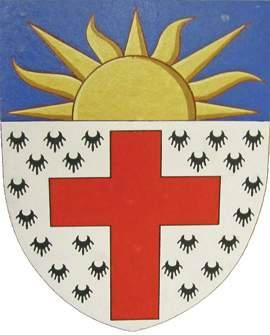
g New director of ministries and assistant to bishop hire Rev. Johnathan Bauer has joined the Synod Office staff as director of ministries and assistant to the bishop. Originally from the U.K., he was most recently rector of Emmanuel Episcopal Church in Virginia. He has served in rural, suburban and city-
centre parishes, as well as in clinical work and nonstipendiary ministry. He has also been a Benedictine Oblate for many years.
g Laura Woolner named a postulant Bishop Helen Kennedy has announced that Laura Woolner is the newest postulant in the Diocese of Qu’Appelle. Woolner
will be working with Archdeacon Kim Sherwin to explore ministry in the diocese.
g Archbishop David Crawley dies Archbishop David Crawley died Aug. 17. From 1982 to 1985, Crawley served as rector of St. Michael and All Angels, Regina, with Foxleigh and Winnetka.
Born in Minnedosa, Man., in 1937, Crawley was ordained deacon in 1961 and to the priesthood the next year, in Edmonton. After his time in Qu’Appelle he served in Vancouver, and was elected bishop of Kootenay in 1997 and then metropolitan of the Province of British Columbia and Yukon. He retired in 2004.


Continued from page 1 unworthily. This passage takes up more than a page in which we are implored to give continual thanks, submitting ourselves to His holy will and pleasure all the days of our life.
Also, right after the “therefore with Angels and Archangels … Holy Holy” in the 1962 version is the prayer of consecration, but in the original the next prayer begins, “We do not presume to come to this table …” and then follows the prayer of consecration, and then the people receive the sacrament.
After the Lord’s prayer they recite the last paragraph that we would say at the end of
the consecration prayer: “Wherefore, O Father, lord of heaven and earth … .”
Fred Payton, lay reader and historian, gave a historical overview of St. Mary’s. The Diocese of Saskatchewan was established in 1873 and on May 3, 1874, John McLean was consecrated bishop in the Lambeth Church of St. Mary in England.
He then travelled to Canada and one of his first duties was to visit the men who were cutting logs for St. Mary’s Church, where he spoke words of appreciation and encouragement.
On Christmas Day 1875, St. Mary’s opened. The male pioneers asked that
it be named after a female saint from the Bible in recognition of the courage and loyalty of the women who had willingly shared with them the privations and hazards of pioneer life.
In the mid 1940s, siding was put over the logs and the church was put on a foundation; the lectern, pews with the arched ends, red hangings and window blinds are all originals.
The altar and stainedglass window were built at the Penitentiary in the mid 1940s. The porch was originally from the first St. Alban’s Church.
Other furnishings were donated over the years, including a painting of the Madonna and Child, which
was painted by an inmate of the Penitentiary and presented to Archdeacon Payton.
This painting hangs in the church today thanks to Payton’s granddaughter, who inherited it and has loaned it to the church.
St. Mary’s was the established parish church for Prince Albert Anglicans. In 1879 a chapel of ease (St. Alban’s) was opened nearer the site of the Nisbet settlement.
The daily offices of morning and evening prayer were said in the chapel, but baptisms, marriages, communion, funerals and confirmations had to be performed only at
St. Mary’s. Eventually St. Alban’s became the place of worship due to the greater population nearer to the town.
St. Mary’s fell into disuse following the move of Emmanuel College in the early 1900s. In the 1940s, summer services resumed with one in July and August. Services are now held regularly once a month in June, July and August with occasional services of baptisms, marriages and funerals. A large tent was erected in the grounds where participants were invited to partake of tea and bannock imitating what would have been the refreshments in the past.
Ruth Elizabeth (Beth) Bilson PhD, K.C.; July 19, 1946 to Aug. 13, 2025
Submitted
SASKATOON —
Diocesan chancellor
emeritus Ruth Elizabeth (Beth) Bilson died in Saskatoon on Aug 13. Diocesan chancellor for 17 years, Beth was made chancellor emeritus in 2016.
Born in Regina, Beth grew up in Saskatoon most of her life and attended the University of Saskatchewan, where she completed three degrees (BA (Hon), 1967; MA, 1970 and LLB, 1977) and went on to join the Law faculty in 1979; she completed a

PhD in Law at the University of London in 1982. Beth served as the assistant dean of the College of Law (1988 to 1992) and was the first female dean of the College of Law (1999 to 2002), and served as acting dean (2010 to 2011 and 2014 to 2016). She also served in other positions, such as the acting dean of education, assistant vice-president of administration (1986 to 1988) and university secretary.
She became well known
in legal circles as a labour arbitrator and, from 1992 to 1997, as the first female chair of the Saskatchewan Labour Relations Board.
In 2000, she was awarded the designation of Queen’s Council, made professor emeratus, and in 2004, she authored the Bilson Report, the influential recommendations of the federal Pay Equity Task Force, which she’d chaired.
She served as a bencher of the Law Society of Saskatchewan for a number of years and won many awards and accolades for her work, including the Louis St-Laurent Award of Excellence, the highest recognition given by
the Canadian Bar Association, for a lifetime of outstanding service to the legal profession and society at large.
In 2016, she was also recognized as canon emeritus of the Diocese of Saskatoon and she was awarded the Queen Elizabeth II Platinum Jubilee Medal in 2023 for her contributions to the Province of Saskatchewan.
In 2024, she and two colleagues published “Creating a Seat at the Table,” a book of essays by female lawyers about their experiences as women in the legal profession and followed that up with an accessible podcast called “Dear Beth: A Women in Law Podcast.”
Over the years, she also chaired the board of United Way Saskatoon and served on the board of the Wanuskewin Heritage Park.
A memorial gathering to honour Beth was held at the University of Saskatchewan Health Sciences Building, followed by a reception at the College of Law on Sept. 6. In lieu of flowers, please consider donating to the University of Saskatchewan College of Law Scholarship “Beth Bilson Memorial Fund” or to United Way Saskatoon. To share memories and condolences or to view the video of the memorial service, visit www. parkfuneral.ca.


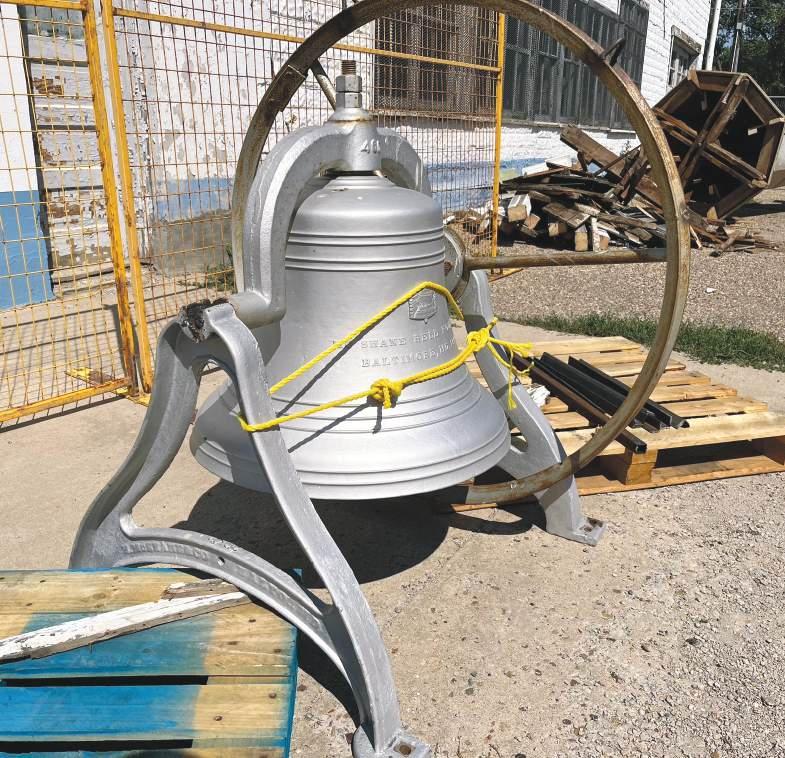

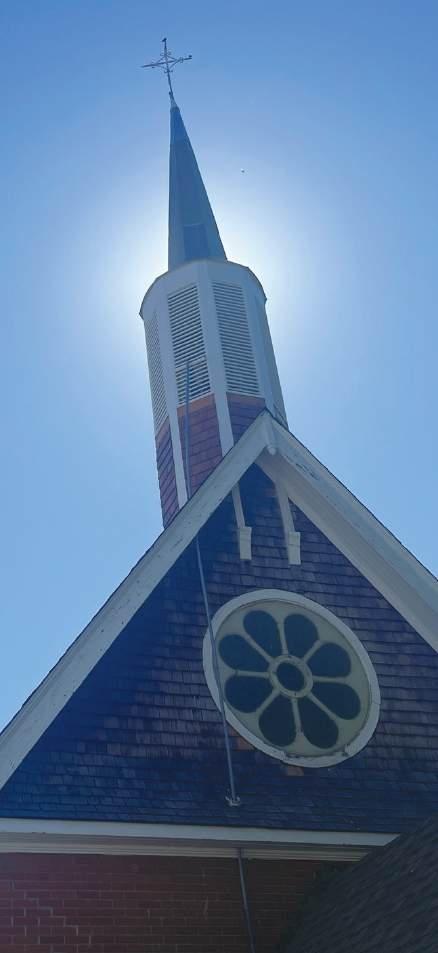
By the Rev. Peter Coolen
HUMBOLDT (S’toon) — On May 25, St. Andrew’s Parish in Humboldt was the location for a special service for the confirmation of a parishioner, the installation of a new lay reader, and the celebration of the retirement of the parish priest-in-charge.
The service was attended by a number of clergy, including the Right Rev. Rod Andrews, interim bishop; the executive archdeacon, the Ven. Alex Parsons; the priest-in charge of St. Andrew’s and the regional dean, the Rev. Canon Marie-Louise Ternier; the Rev. Peter Coolen; and the Rev. Ron Bearg (retired), cousin to the confirmand.
The service began with the confirmation of Veleda Baerg; Veleda’s confirmation was the last confirmation to be conducted by Bishop Rod as interim bishop before the consecration of the Rev. Chad McCharles as the new 14th bishop of the diocese.
Following Veleda’s confirmation, Valeda spoke of her faith journey and of her reasons for seeking confirmation in the Anglican Church.
After the confirmation, Shirley Armstrong was installed by Bishop Rod as a new lay reader in the parish.
These two celebrations were then followed by the Eucharist presided by, and a homily presented by, Bishop Rod, which focused on change and spiritual renewal in individuals and the life of the parish.
Following the service and the dismissal, those present adjourned to a reception and a soup and sandwich luncheon in the parish hall, at which Veleda and Shirley were presented with a celebration cake by the retiring incumbent, the Rev. Canon Marie-Louise Ternier.
Marie-Louise was also presented with a retirement gift, a framed picture of the church, by the congregation.
See page 17 for Baerg's testimony about her faith journey and decision to be confirmed in the Anglican Church.
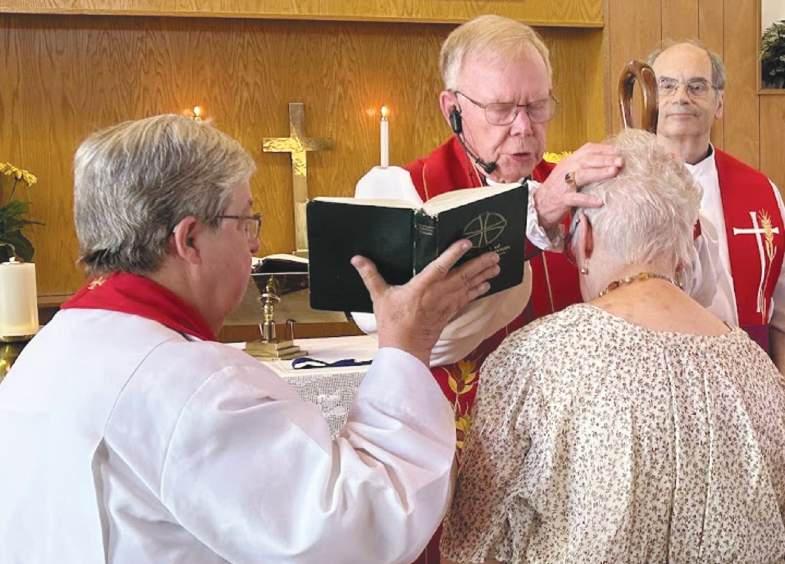
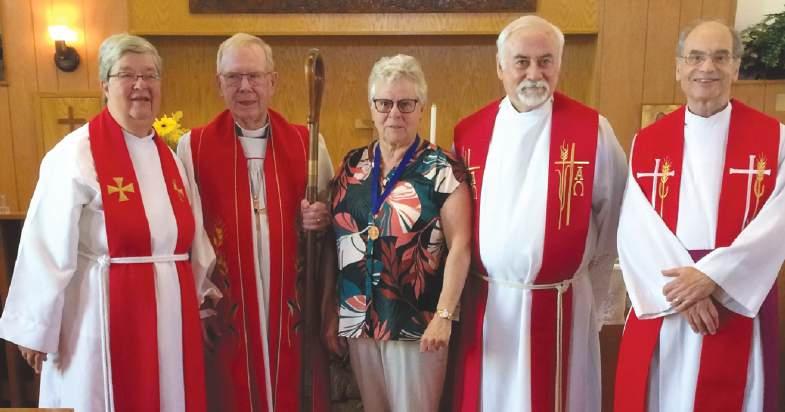

After the service, people adjourned to the hall for a soup and sandwich luncheon, where the retiring incumbent, the Rev. Canon Marie-Louise Ternier was presented with a gift, a framed picture of the church, by the congregation.

After her confirmation, Veleda spoke of her faith journey and her reasons for being confirmed in the Anglican Church.
At the service at St. Andrew’s, Humboldt, on May 25, Shirley Armstrong was installed as the new lay reader for the parish by Bishop Rod. Present with Shirley (centre) were, from left, priest-in-charge, the Rev. Canon Marie-Louise Ternier; interim Bishop Rod Andrews; the Rev. Peter Coolen; and the executive archdeacon, the Ven. Alex Parsons.

By Mary Brown
CHRISTOPHER LAKE
(Skwn) — This summer, the Rev. Brody Albers extended an invitation on Facebook for people to attend a sung Compline service led by one of the students visiting from King’s College in Halifax.
This year the diocese hired four young people who were and are students at King’s College.
Cameron Lowe, originally from Bridgewater, N.S., led the congregation in the singing of compline.
Cameron was here last year and five years before that. He has finished his education at King’s and he now lives in the rectory boarding house beside St. George’s Round Church in Halifax. He is contemplating his future, which could be pursuing a life in the ministry.
Anil Pinto Gfoerer was also here last year. She has finished her education at King’s College. She is originally from Winnipeg and will be returning to Manitoba this fall, where she will pursue her future as a bookkeeper.
Gabriel Hopkins has two years left at King’s College and plans on becoming a minister.
Kate Fleming also has two years left at King’s College and is still contemplating what her vocation will be.
This year the theme for the VBS instructions was the Lord’s Prayer and this summer there were 18 participants at St. George’s
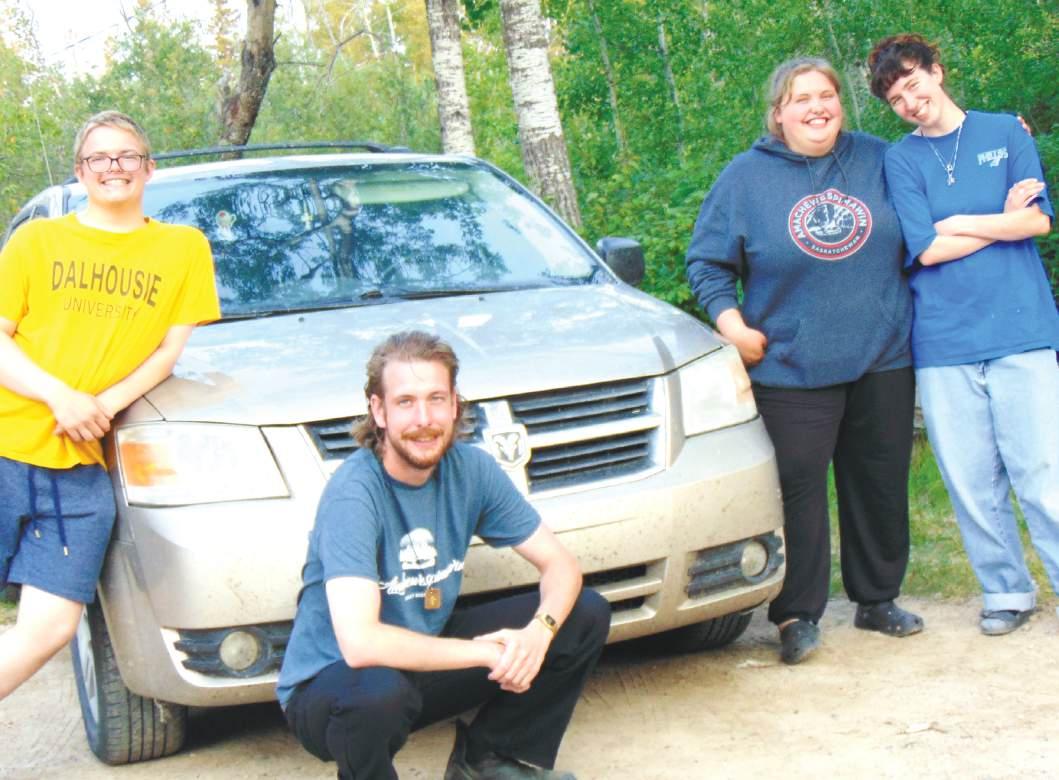
in Prince Albert, 34 in Birch Hills, 15 at Stanley Mission and 23 at James Smith.
The instructors enjoyed their time with the kids. In one location, one of the kids asked if the priest was wearing any clothes under his vestments, who then said that he wouldn’t wear anything!
The instructors enjoyed going to the waterfalls in Stanley Mission but were
disappointed with the low attendance due to the location for their sessions.
One of the best parts of the day was running crafts. The age of participants is, according to the instructors, “potty trained to bored” about five years to 12 years and even a few younger.
When it would be time to pray, some of the kids would ask about Jesus and many of them wanted

prayers for their deceased pets. Another hit with the kids was “Water Day,” usually on a Friday, and it seems the teacher’s got wetter than anyone else.
What impressed the VBS teachers the most was their time at James Smith Reserve.
The classes were held in the health centre and they were assisted by members of the staff and daycare workers. At the end of each
day each child was given a brown bag lunch to take home.
They were looking forward to sessions in Muskoday and Cumberland House. It is not known what lasting impressions the kids experienced attending the VBS classes, but their instructors are honoured and will always remember their time in the Diocese of Saskatchewan.
By the Anglican Journal
TORONTO — Two prominent Anglican ecumenists have been awarded the King Charles III Coronation Medal: Canon Alyson BarnettCowan, former president of the Canadian Council of Churches and Archdeacon Edward Simonton, vicar general and archdeacon of the diocese of Quebec. They were nominated by the Canadian Council of Churches and the Anglican Orthodox International Theological
Dialogue, respectively.
The medal is awarded to people throughout the British Commonwealth commemorating the occasion of King Charles’ coronation.
The UK issued 400,000 medals, 30,000 of which Canada has been awarding since 2024. In Canada, the Governor General’s office awards the medals to recognize Canadians who have made outstanding contributions to Canada or for achievements abroad which bring credit to Canada.
Continued next page
By Jill Javet
SASKATOON — In true Men’s Sheds spirit, a simple idea — sharing music — blossomed into a night of connection, creativity and communitybuilding at Shedstock, a fundraising concert held at Christ Church Anglican in Saskatoon.
The event was the brainchild of Rev. Mark Kleiner, co-founder of the Toon Town Men’s Shed, musician, and pastor of Christ Church.
For Mark, the evening marked a long-awaited return to the stage. After spending a decade immersed in Vancouver’s music scene — writing, performing and recording — he put down his guitar to enter seminary.
Now, more than 20 years later, Mark stepped back into the spotlight with a
Continued from page 8 Barnett-Cowan was chosen for her ecumenical work with the Canadian Council of Churches and for her service as director for Unity, Faith and Order with the Anglican Communion from 2009 to 2015 and as ecumenical officer of the Anglican Church of Canada from 1991 to 2009.
Simonton was nominated for his work promoting theological dialogue with the Oriental Orthodox community of churches and highlighting the humanitarian struggles that many Christians in those communities face.
“I think the thing I’m most proud of in my work in Canada was to be staff for the whole process leading up to and then following up on full communion with the Evangelical Lutheran Church in Canada (in 2001),” says BarnettCowan.
Simonton says he hopes his receipt will draw some desperately needed attention to the struggles of these churches.
“We’re like, ‘Please, for God’s sake, somebody pay attention to what’s happening!’ These are genocides; these people are being wiped out.”

collection of original songs that hadn’t been heard live before.
Backed by his band, Vintage Youth, featuring Ian McWalter on bass, Perry Wirachowsky on drums, harmonica, and vocals, and Stephanie Sydiaha on backing vocals and kazoo, Mark brought
new life to his music.
In just five weeks, the band took a set of unfamiliar songs and transformed them into a moving, joy-filled performance.
The sanctuary of Christ Church was filled with a crowd of about 120 people at the peak
of the night; a beautiful mix of parishioners, friends, music lovers, and Shedders.
Admission was by donation, and the atmosphere was full of warmth and generosity. Homemade samosas (courtesy of church member Mya) and waffles with ice cream (thanks to the Shedders) sweetened the intermission.
In total, the evening raised nearly $1,200 to support the Toon Town Men’s Shed; in a nod to the Shed’s hands-on spirit, attendees were also encouraged to bring tool donations.
These funds and materials will help equip the Shed, which is hoping to move into a dedicated building in the near future.
The name Shedstock and its iconic poster design
came from Mark himself: a tongue-in-cheek tribute to Woodstock, but with a distinctly Shed twist. It captured the vibe perfectly: a night that celebrated creative expression, community care, and the power of coming together to build something meaningful. Whether it was the harmonies, the laughter, or the shared waffles, Shedstock reminded everyone in the room of what a Shed can be: a place not just for tools and projects, but for music, friendship and new beginnings. Information and updates on Men’s Sheds Canada may be obtained at https://mensshedscanada. ca. Jill Javet is the communications and marketing officer for Men’s Sheds Canada.

By Kate Berringer Camp Harding director
PROVINCIAL PA RK
(Qu’A) — We thank God for a busy season at Camp Harding this year.
In June, we hosted several women for a second annual craft and fellowship weekend.
Bishop Helen Kennedy led our worship times.
We had a great time being together through crafting and fellowship.
From July 6 to 11, our junior camp offered an incredible week of fun, friendship and celebration for nine- to 12-year olds.
Campers from Saskatchewan and Alberta learned about Jesus’ love for us and about His kingdom through the parables.
Lessons included drama, baking, art and science activities.
We also made nests, tiedyed, played games, and crafted.
At our teen camp from July 20 to 25, campers studied 1 Corinthians 9:24-27 and competed in team and individual Amazing Race challenges designed to explore some of what is needed to run the race well: discipline, love/servanthood, perseverance, patience and submission.
Dairy Queen gift cards were the prizes for points earned through the week!
Both of camps were jam-packed with worship, music and camp activities
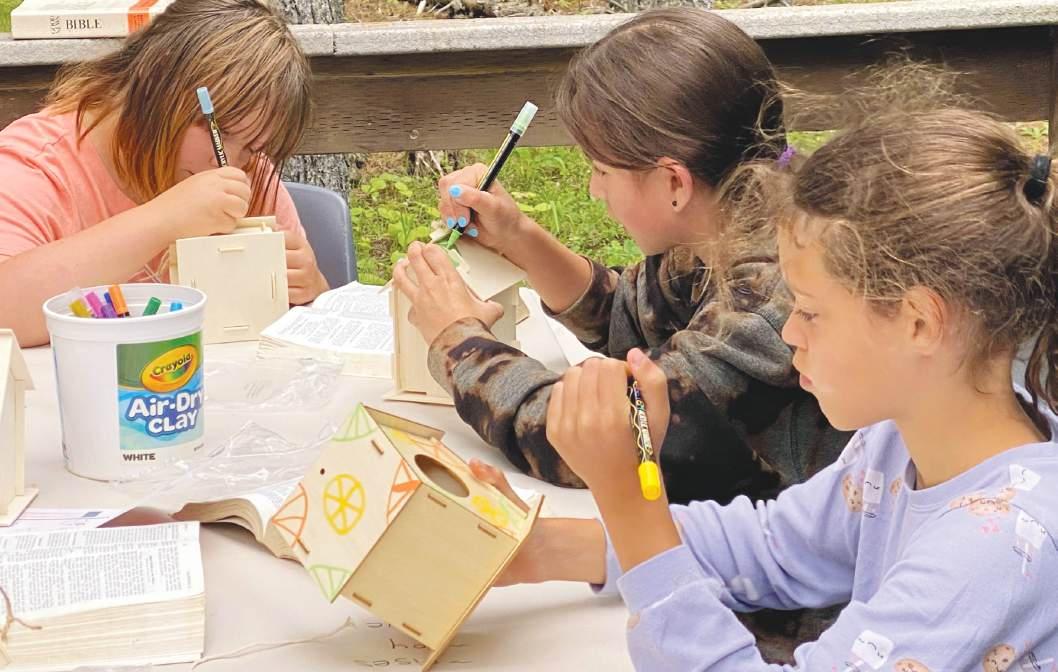
including horseback riding, wall climbing, swimming and kayaking.
From Aug. 10 to 15, we welcomed 37 campers aged 10 to 17 for the second Dinka language instruction summer camp.
The lessons focused primarily on youth selfdiscovery as a Dinka child, a beloved child of Creator God, and valued member of the community.
This focus was done through daily morning

devotion and attendance in language instruction sessions on family interactions and genealogy.
The campers then had the opportunity to express their unique cultural identity in the afternoon through participation in recreational activities, such as horseback riding, wall climbing and tree top drop, and swimming.
The evening campfire stories provided the
youths some practical social skills on financial literacy, teaching on love and kindness, and social media interactions, highlighting the impacts of bullying and other forms of violence in relationships.
We were also privileged to host the Anglican Church of Canada/ Alongside Hope Fire Talk gathering from Aug. 15 to 20.
With a focus on mental
health peer mentorship, Anglican worship, Indigenous teachings, and fun activities, Indigenous youths from Manitoba, Alberta and Saskatchewan forged new friendships and strengthened their faith. We have been very, very blessed by the Holy Spirit through our dedicated Camp Harding staff, volunteers and donors. Your prayers for continued blessings in future years are always welcome.
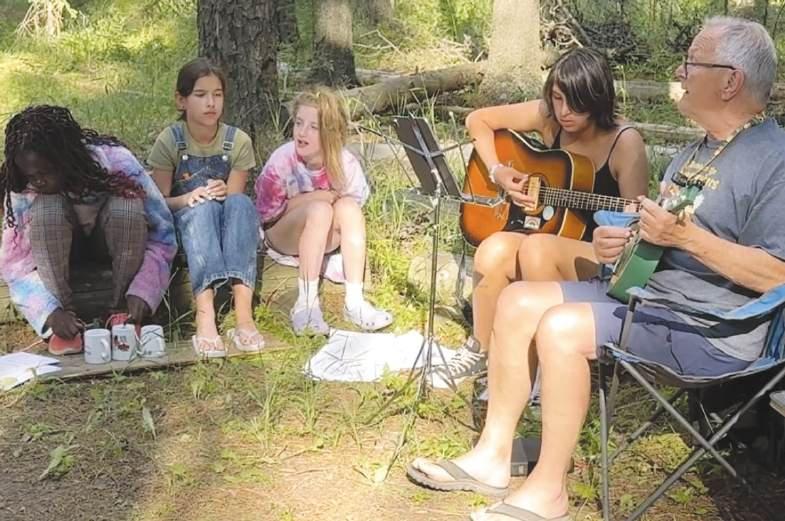





By Rev. Gene Packwood
Tucked in between Morning and Evening Prayer in both the BCP and the BAS are PRAYERS AT MID-DAY (BCP p16, BAS p56). Brief, to the point, and with an evangelistic missional focus — an excellent three-minute act of worship and prayer for middle of the day. As usual, the work of the Holy Spirit is woven into this short liturgy.

guide us into living and walking in the Holy Spirit, Sunday by Sunday, day by day, morning, noon and night.
And then,

“Heavenly Father,” we pray, “send your Holy Spirit into our hearts to comfort us in all our afflictions, to defend us from all error, and to lead us into all truth” (BAS , p58). The Father sends Him, just as we declare in the Nicene Creed, to comfort, defend and lead.
Book of Common Prayer
In the BCP, the Holy Spirit is the One in whose name we pray and “who livest and reignest” with the Father and our BLESSED and ALMIGHTY Saviour, “ever one God, world without end. Amen ”
Book of Alternative Services
If ever there was a time when we Canadian Anglicans need defending from error and leading into truth, it is now.
This is worth praying every noon hour, methinks.
The Scandal of Particularity
In July, Bishop Chad McCharles (far left) conducted a service at St. Stephen’s, Merrill, accompanied by Bishop Rod Andrews (retired) (back row, third from left) and the Venerable Dan Hughes (far right). Built in 1907, St. Stephen’s is one of the oldest Anglican parishes in the Saskatoon area; it rests in a quiet, elevated position, upstream of, and a few kilometres southwest, of the city. Several of the diocese’s deceased clergy and their spouses rest in the cemetery that surrounds the church.
Photo by Dawn McCharles

In the BAS , the Holy Spirit features prominently in the first of the suggested passages of Scripture: the fruit of the Spirit is love, joy, peace, patience, kindness, goodness, faithfulness, gentleness, self-control. If we live by the Spirit, let us also walk by the Spirit. (Gal. 5:22, 23a, 25; BAS p57)
This is an excellent midday reminder to ask by whom, or what, I am living and walking that day.
“For the desires of the flesh are against the Spirit,” Paul reminds us, “and the desires of the Spirit are against the flesh, for these are opposed to each other, to keep you from doing the things you want to do” (Gal. 5:17).
Take note: opposed to each other!
Living and walking by the flesh — by my preferences, appetites and ambitions — is opposed to living and walking by the Holy Spirit. I’m not necessarily supposed to get to do what I want.
Neither are you.
Praying the Prayer Book liturgies will lead and
Next come two prayers that appear in both books asking that “all the peoples of the earth may look to you (Blessed Saviour) and be saved,” that all the world would be filled with radiance of our Almighty Saviour’s glory and “that all nations may come and worship you.” Amen!
And there we have what past Archbishop of Canterbury, George Carey, wrote that theologians call “the scandal of particularity”:
“That is, Christianity makes the bold claim that Jesus Christ is so incomparable that we meet God fully in Him. In this particular man, God is known. This does not mean, of course, that God cannot be known in other faiths.
"Mainstream Christianity treats other religions with respect and allows that God can be known and is known by men and women of nonChristian faiths.
"We do not deny that in the higher religions of mankind there are glimpses of the divine. But we cannot shift from Continued on page 17
By Rev. Canon Marie-Louise Ternier
In October 2021, in the midst of the pandemic, a seemingly innocuous spiritual and ecclesial earthquake occurred in the Vatican.
Pope Francis inaugurated a multi-year Synodal project that, for the first time, would actively encourage all laity and clergy to participate alongside the bishops.
Initially planned for three years, with two major assemblies in Rome, Pope Francis, just before his death, expanded the Synodal project for another three years, intended for implementation in every Roman Catholic diocese in the world.
As this monumental task has been unfolding in Catholic circles, this reclaiming of an ancient practice in the church might well have a few Anglicans snickering smugly behind closed doors.
Why? Well, we Anglicans have been doing Synods forever!
We have diocesan synods, provincial synods, and general synods, each one taking place approximately every three years. We even have electoral synods and constitutional synods on occasion.
As far as being a synodal church, we Anglicans have perfected the art.
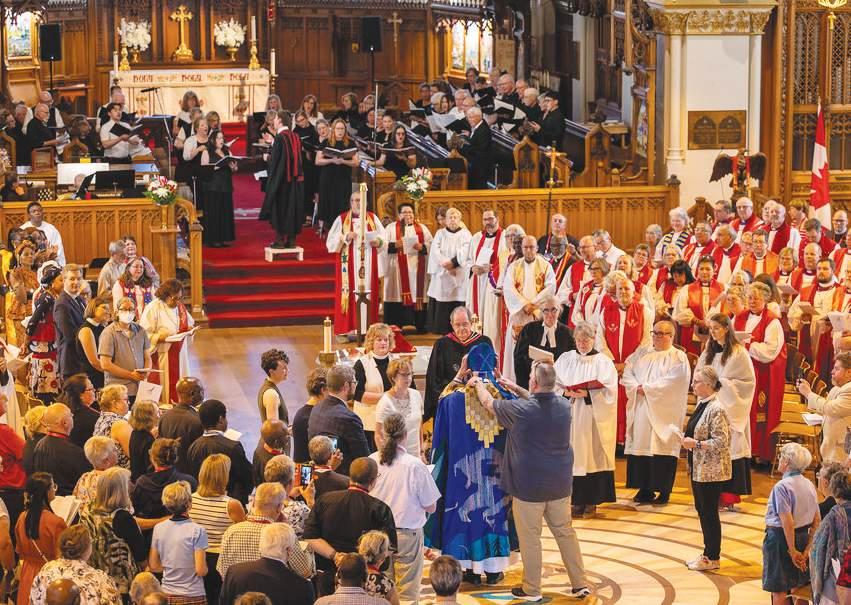

And so we can watch rather smugly as Pope Francis, and now Pope Leo, are encouraging all Catholics — bishops, clergy and laity — to become more synodal, more consultative, more inclusive of all members of the church.
But, have we Anglicans really perfected the synodal art of relating, listening, discerning and self-emptying? Is our smugness justified? Maybe not.
Inspired by the Roman Catholic Synodal initiative, our national ecumenical and interfaith animator, the Rev. Scott Sharman, provided an insightful presentation on the concept of Synodality at the recent General Synod in London, Ont., the result no doubt a cross-pollination with our Roman Catholic partners.
Several days later at General Synod, Sharman’s presentation was followed by a panel of five individuals representing Roman Catholic, ELCIC Lutheran, Moravian, United Church and Indigenous traditions.*
Several panel members shared the Synodal governing procedures and legislative processes in their respective churches at which important theological, liturgical and ecclesial decisions are taken to advance the church’s Gospel witness.
Their focus was naturally on their Synods’ decision-making power and less on the foundational process of how to conduct discussions/conversations “in the Spirit.”
The Roman Catholic Synodal model has no ecclesial legislative power. Thus, the RC panel member focused her contribution primarily on the Synodal process of conversation “in the Spirit,” as this has been the centrepiece of Rome’s efforts to engage the Catholic faithful in frank conversations.
We Anglicans have been doing Synods forever! We have diocesan synods, provincial synods, and general synods, each one taking place approximately every three years. We even have electoral synods and constitutional synods on occasion. As far as being a synodal church, we Anglicans have perfected the art. And so we can watch rather smugly as Pope Francis, and now Pope Leo, are encouraging all Catholics — bishops, clergy and laity — to become more synodal, more consultative, more inclusive of all members of the church. But, have we Anglicans really perfected the synodal art of relating, listening, discerning and self-emptying? Is our smugness justified? Maybe not.
Notwithstanding the fact that RC bishops have responded to this summons of dialogue in varied ways — enthusiastically, lukewarm, minimalist, and downright dismissively — this conversation process itself deserves attention.
As Anglicans, it behooves us to take a page or two from the current Synodal playbook in RC circles to evaluate our own Synod practices.
The last speaker on the panel at General Synod on
June 27 was our own Rev. Travis Enright, Indigenous priest from the Diocese of Edmonton. He turned around to the RC presenter and with an affectionate tease said, “Glad to know that the Catholics are catching on/up!”
Yes, it is great to know that the concept of Synodality is being reclaimed and renewed in Catholic circles at every level.
But there’s also a certain irony here; the
very Christian Church that is perceived as the least participatory in its governance and decisionmaking is hereby offering us Anglicans and others a summons to review our own Synodal processes.
How are we fostering faithful attention to growing a relational, listening, discerning and self-emptying family of Jesus – including both traditionalists and progressives, the healed and unhealed, the open and closed-minded ones?
As we embark on the implementation of the Pathways recommendations, let us keep this question close to our minds and hearts.
Who knows, we could even look to our Roman partners for guidance, scrutiny and improvement.
Stay tuned for next month’s follow-up article: Conversations in the Spirit A summary of insights compiled from RC sources. *Both presentations can be viewed at www.youtube. com/live/UNmEinsC9f4 (beginning at 1:50) and www.youtube.com/live/ X4h0rmgVu8E (beginning at 10:42).
Rev. Canon Marie-Louise Ternier is the diocesan ecumenical officer for the Diocese of Saskatoon.







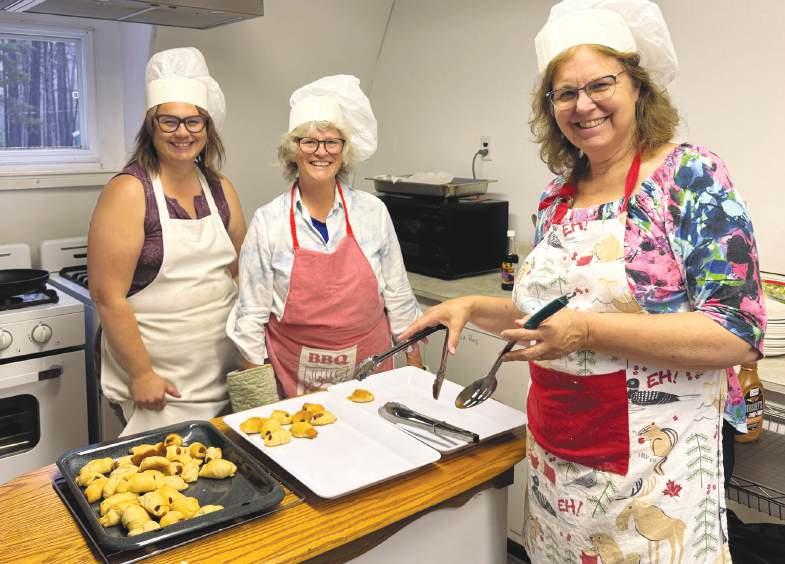
is an

While exploring how to show love and servanthood, teens were given play money to choose to either buy items for Regina Transition House or treats for themselves. Then they wrote notes of love and support and decorated the baskets, which were delivered to RTH the following week. Photo by

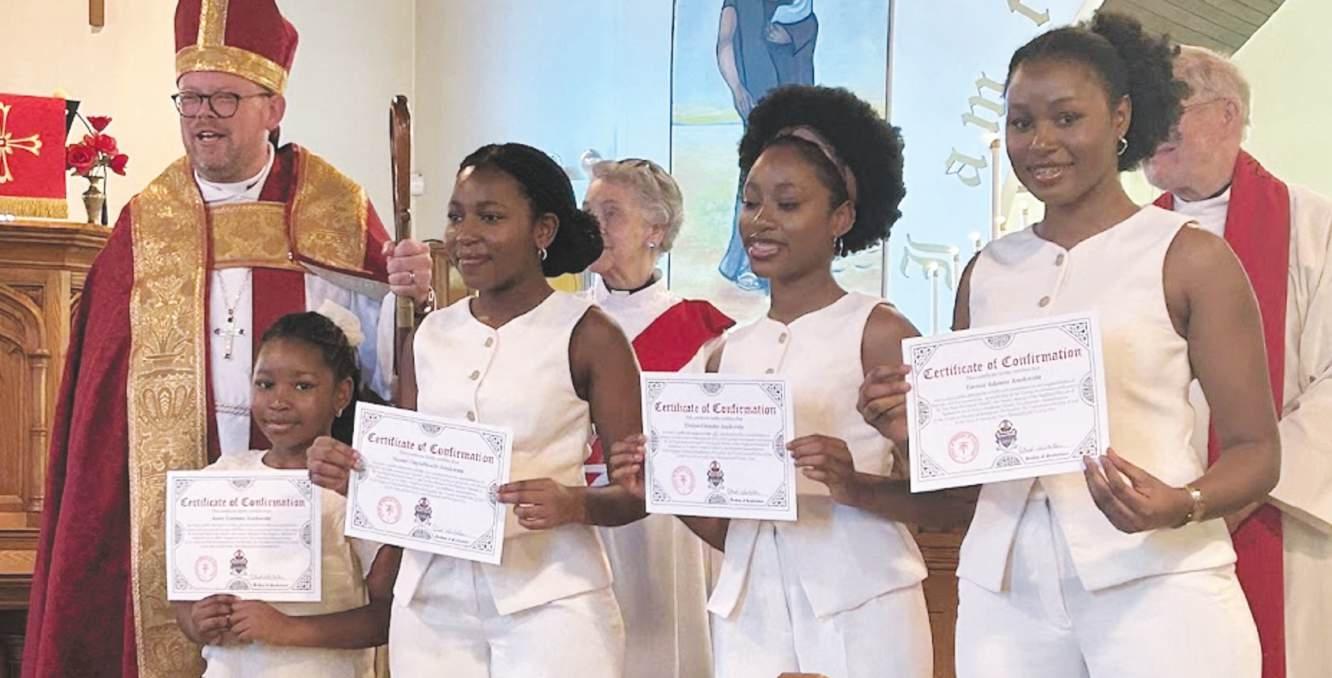
On July 27, at St. John’s Minster, Lloydminster, Bishop Chad conducted his first confirmations, assisted by Archdeacon Michael Stonhouse and the Rev. Muriel Foster. Confirmed were four sisters; from left are Amey, Naomi, Divine and Favour Anokwute.
Marie-Louise Ternier
By
the Rev. Dr. Iain Luke Principal, College of Emmanuel & St. Chad
This summer I attended two great gatherings of Anglicans from across the country.

At the end of June, General Synod met in London Ontario, with six of us participating from Saskatoon. Early in August, Sacred Circle gathered in Moh’kinstsis (Calgary), and I had the privilege of observing the meeting as a displayer, representing the college.
Both these meetings focused on heavy questions about the state of the church and what our future will hold, but there were big differences between them. General Synod reflected an established way of doing things. We came together as we have done so often, 44 times since 1893.
The church has faced many crises over that time, but this time it was a crisis from within. The familiar ways are unsustainable and need to change.
Patterns of

communication, organization, management and decisionmaking all came under scrutiny, because what has served us in the past is no longer serviceable. The way the church relates to Indigenous and northern communities is shaped by past realities that no longer reflect who we are.
Underlying all of the discussion at Synod was the perception that we are losing the structures that have served us well. While there were some asking what might come in their place, I had a feeling Synod was more preoccupied with the loss of what was familiar.
How different at Sacred Circle! This gathering is similar to General Synod in a sense, since it brings together people from all parts of Canada to discern and decide for their
church.
The people who attend are primarily Indigenous Anglicans, but each new Circle includes more invited guests, who have the opportunity to hear and see what the Indigenous church is doing.
This year’s Sacred Circle stands in a line of 12 previous gatherings, every three to five years, but in other ways it was brand new.
The people present were taking hold of the responsibility they have, to represent the church and its mission.
One of the main goals was to identify regions of the country whose voices need to be heard in national conversations, including those who are often left out because of small numbers or other limitations.
From sea to sea to sea, communities exist in
relationship with the land on which they live, and it is from those roots that discernment and decisionmaking begin.
Sacred Circle did not forget the past; no one there could.
The past for Indigenous Anglicans, and others, contains a lot of grief and loss. While there were moments when that loss became central to the conversation, participants kept turning to the future, celebrating healing, and embracing their call to walk together into the open space “Beyond the Treeline” (the theme of the gathering).
Both events reflected something real about where the church is right now.
We are losing some of the structures of our past, and we are rediscovering how we (not our structures) are still the church, in all the ways that matter.
We are dealing with memories of times past, but we are also in a place where we can embrace hopeful action for the future.
What I especially took away from Sacred Circle, though, is a lesson about leadership in today’s church. Leaders are a gift to the church, but they cannot decide its fate.
Only the people of God, the disciples of Jesus, can decide if we are going to keep living our faith together, or not.
As I return to my work at Emmanuel & St. Chad after a sabbatical leave, this is a lesson I take with me. When we look to our own past, we see many generations of focus on developing leaders.
Today’s church needs something else, or something more: training and education that empowers the faithful people of communities to be the church, where they are, with the gifts they have.
I look forward to more conversations with people, in the dioceses of Saskatchewan and across the Province of Northern Lights, about what that will look like.
What do you need, in your faith community, to follow Jesus more deeply and to practise His Good News in ways that the people around you can receive? Let me know!
By Veleda Baerg
Editor’s note: See page 7 for more details about the confirmation.
SASKATOON — I was raised in the Mennonite Brethren Church where my father was a pastor.
As a young teenager I accepted Jesus as my Saviour and was baptized. The baptism took place along Highway 16, by the Borden Bridge crossing the North Saskatchewan River. Visualize the parking area on the right side of the bridge, then look about quarter-mile to your right on the eastern shore of the river.
Preparations had been made there by erecting two change tents and a handrail into the river with high water from mountain runoff. The water ran fast and was very cold.
A large number of our church congregation from Dalmeny came to participate in this special service. Gathered on the riverbank, they sang favourite hymns of faith and praise without written words or musical accompaniment and singing four-part harmony as they always did in church. The music echoed throughout the river valley, creating a

Following her confirmation by Bishop Rod Andrews, Veleda Baerg presented a testimony of her faith journey and why she chose to be confirmed.
Photo by Rev. Peter Coolen
wonderful atmosphere for us.
After a prayer and a short meditation, we proceeded to the riverbank. Our senior pastor and assistant pastor, my father, entered the river along with the three baptismal candidates, while those on the shore sang “Shall We
Gather at the River.”
The first two candidates were baptized by total immersion into the river, assisted by the handrail. Then came my turn. As I moved into position, I was surprised by my father’s warm hands clasping and covering mine.
He warned me to take a deep breath as he
immersed me and hold on to the handrail. Being baptized by my father was very special. That evening, we gathered in the church to celebrate Communion with the entire congregation.
Another first for the three newly baptized.
After high school I attended Bethany College in Hepburn, followed by business college in Saskatoon. I moved around Saskatchewan and Alberta for many years, working for different businesses and gaining a lot of experience.
Even with the many moves I always looked for a church home. In 1996, I returned to Saskatchewan, affectionately called God’s country.
It was then that I discovered that my former church home had been decommissioned and sold; membership records were transferred to the Canadian Mennonite Brethren Archives in Manitoba.
That did not sit well with me, but I made several decisions at that time that changed the course of my life.
In 2014, I retired to Humboldt; again, I was looking for a church home.
After some meanderings I found St. Andrew’s Anglican Parish. A Higher
Power knew I needed this group of believers with whom to worship.
St. Andrew’s became my family because I had no close blood family in Saskatchewan.
After my parents and siblings passed away, I was left with nieces and nephews and one sister-inlaw in Alberta.
It’s a rather long drive to Grande Prairie to have coffee and share a hug!
The Anglican parish priest took me under her wing as she does with everyone and encouraged me to read the BAS (Book of Alternative Services).
Together with several parishioners we embarked on some Alpha courses to learn how to be a better Christian and strengthen my faith. I was also given a book written by Patricia Bays called “This Anglican Church of Ours.” This book helped debunk some of my thoughts and reservations about the Anglican Church and its ways of doing things. I have reread many of its pages and I learn more each time I do.
Thank you to everyone for giving me the nudge to take this step toward Confirmation in my faith journey and encouraging the whole church family to keep going forward.
Today is a great day!
Continued from page 12 the conviction that is as old as the New Testament: that God is revealed fully and finally in the person of Jesus Christ.
“We know how infuriating and arrogant such a claim must seem to those who sincerely believe that in their Scriptures and in their worship, God is found and experienced,"
said Carey.
"But we have to say with Paul as he preached to the adherents of other faiths in Athens: ‘Whom therefore ye ignorantly worship, Him declare I unto you’ (Acts 17:23). This is the scandal of particularity with which we must live.
“Christians cannot yield this un-negotiable element in their faith. We
believe that the God of the universe longs to reveal Himself and He does so in many different ways and forms, through religion, through reason, art, and human intelligence, but each and every one of these ways is limited.
"Only in a personal relationship with Jesus Christ can God be fully known, worshipped
and obeyed.” (The Most Reverend George Carey, “Archbishop’s Voice,” The Anglican Digest, Pentecost 1992, p62)
Our world needs to be filled with that radiance more and more every day. This is very much worth praying for. Daily.
By living and walking prayerfully in the power of the Holy Spirit, with
the help of such Canadian Anglican treasures as Mid-Day Prayer, we are comforted, defended and led into the wonder and scandalous particularity who is our Blessed and Almighty Saviour, Jesus.

Submitted
SASKATOON — What does it mean to care for the whole person — body, mind, and spirit — in today’s health-care systems?
The College of Emmanuel & St. Chad invites you to join a new course for the autumn of
2025: A Theology and Ethic of Health Care, instructed by Erika Mills. Together we will explore how faith and ethics shape experiences of illness, healing, aging, disability and end-oflife care, including Medical Assistance in Dying (MAiD). We will also reflect on the role
of culture, power and intergenerational trauma in the ways individuals and communities experience care. This course is open to everyone: caregivers, chaplains, health-care practitioners, clergy, students and seekers. No prior theological study is required.
Schedule is Saturdays on Sept. 27, Oct. 25 and Nov. 29 at 9 a.m. to 1 p.m. Registration is $500 — it’s $250 for Anglicans — plus a $25 one-time registration fee.
To earn more or to register visit https:// emmanuelstchad.ca/atheology-and-ethic-ofhealthcare.
By Rev. Peter Coolen
SASKATOON — Every year, since 2012, a group of about 20 bicyclists of the Texas 4000 pass through Saskatoon and are hosted by Christ Church Anglican, as they do so.
The Texas 4000 is a charity cycling ride aimed at fundraising for cancer. Each year three separate groups of roughly 20 university students from Austin, Texas, cycle from their home state to Anchorage, Alaska.
Before the ride, each student must raise $4,500, cycle 2,000 training miles, and volunteer over 50 hours of community work. Needless to say, these students are dedicated, courageous and strong.
Since the Texas 4000 was launched in 2004, it has raised over US$13 million. It is considered the longest annual charity bike ride in the world.
Christ Church was once again honoured on June 26 to be one of the 70 overnight stopovers for this ride and to host these amazing young people.
On arrival, we arranged for an official city welcome from Senos Timon, city councillor, Ward 2, and provided the 23 riders with a welcome dinner, a social time and sleeping space for the evening.
Also, that evening, the City of Saskatoon generously allowed the riders the use of the nearby Mayfair pool for a shower and a quick swim. The following morning the students awoke to freshly washed laundry, breakfast and food for the road. After an emotional

farewell, with members of the parish, city police service members gave them an official escort, from the church to the outskirts of the city.
We feel blessed to host this amazing group of young people every year and always feel, with each visit, that we have gained far more from their visit than we have given.
Texas 4000
The Texas 4000 website says its mission is to cultivate student leaders and engage communities in the fight against cancer.
It shares hope, knowledge, and charity through leadership development, grant-
making, and its cornerstone event, an over 4,000 mile bike ride from Austin to Anchorage.
It shares HOPE by letting those touched by cancer know the group is riding for them and fighting for a world without cancer.
It shares KNOWLEDGE by bringing life-saving information about cancer prevention to communities and providing leadership development training to tomorrow’s leaders.
It shares CHARITY by contributing to cancer research and support services while developing the next generation of volunteers and philanthropists.


a Thanksgiving
and
By Bob Halliday
SASKATOON — The restoration program at St. John’s Cathedral began in 2010, and with the assistance of a grant from the Frank and Ellen Remai Foundation, the cathedral engaged a restoration architect, who led a team that conducted a thorough building envelope assessment.
The assessment required both visual and other assessments of the structure and some limited destructive testing of the wall and roof to confirm construction details.
Restoration activity began immediately on receipt of the architect’s report and continued through 2022. The principal tasks performed were restructuring and renewing the roof drainage system and reshingling of the roof, but myriad other tasks were accomplished.
The end result is now when it rains outside, it no longer rains inside the church. The Saskatchewan Heritage Foundation was a significant supporter of this work.
The cathedral has now embarked on the final stage of the exterior restoration. The brickwork of the cathedral requires extensive restoration. This is, in part, a requirement based on over 100 years of service with minimal maintenance, but also the result of water damage arising from the roof and gutter failure.
The walls of the cathedral consist of three or, in some cases, two layers of thick brick. The exterior layer must be restored through a process known as repointing.
Deteriorated mortar is removed from between the bricks and replaced with new mortar. This involves grinding out the old mortar, cleaning the joints and installing new mortar. The brickwork is protected from future water damage, structural integrity is improved, and the appearance of the wall enhanced.
The exterior walls consist of some 94,500 bricks and the repointing must be done literally one brick at a time.
Repointing of the south and west walls of the nave is currently underway.

Cathedral
$2 million-dollar, project
and

An example of the repointing process underway at the cathedral of St.
the Evangelist, Saskatoon. All the old mortar between the cathedral’s 94,500 bricks must be cut away and removed and then replaced with new mortar.

The project is expected to continue for five years.
A significant section of wall will be repointed each year with the spire being the last feature to be repointed.
The anticipated cost of this project is $2 million. Once this work is completed, the cathedral exterior will be truly ready for another 100 years of service.
The cathedral has received support from the Anglican Foundation and many other donors in carrying out this work. Fundraising activities
have also included the proceeds from concerts and a “guess the number of bricks” contest won by parishioner Burton Urquhart.
Currently the cathedral is embarking on a “Buy a Brick … or Buy a Bundle” campaign to support the project.
Interested persons can buy a completely restored brick for $25, five bricks for $125, 10 for $250 and so on. The QR code provides more information concerning the project. Also see www. cathedral-restoration.ca

Three bishops from Saskatchewan pose with acting primate
ANGLICAN NEWS SERVICE — The Anglican Board of Mission (ABM) recently shared an account of how one of the missions they aid through funding in Papua New Guinea has provided a second chance for adults at literacy education, working with indigenous communities.
ABM stated that in this year, 8 men and 8 women graduated from the Moreguina Literacy School.
New Guinea during his trip to many of the provinces in Oceania and expressed his great admiration for the Adult Literacy Programmes he saw there.
Back in March 2025, the Secretary General recounted that “One of the things that I admired [in Papua New Guinea] is the adult literacy initiatives carried out by the church.
They went on to share that “Across Papua New Guinea, the Adult Literacy Program has a further 318 students enrolled in locations across Port Moresby and Popondota Dioceses.
Photo by Rev. Peter Coolen
From left, standing beside the crucifer, is the Acting Primate, Archbishop Anne Germond, and the three bishops of Saskatchewan — Helen Kennedy of Qu’Appelle, Rick Reed of Saskatchewan, and Chad McCharles of Saskatoon — who gather at the high altar of the Cathedral of St. John the Evangelist, Saskatoon, after the June 14 service of consecration and instillation of Bishop Chad McCharles as the 14th bishop of the Diocese of Saskatoon.
The program is supported by ABM AID through the Australian Government’s PNG Church Partnership Program.”
The ABM reported that “interrupted education is common” in Papua New Guinea, where financial security is not certain and school costs parents dearly in terms of fees, materials and uniforms.
The Adult Literacy Programmes offer those over school age who never completed their education a second chance to do so.
ABM explained that students complete literacy and numeracy modules, then “teachers work from a flexible curriculum that is led by learners’ interests.”
These might include community or business development lessons, healthy island activities or aid in the transition to formal education or employment or even undertaking the Agents of Change course, developed by the Anglican Alliance.
The Secretary General of the Anglican Communion, the Rt Revd Anthony Poggo, recently visited Papua
"This is an encouragement to me, personally, as someone from South Sudan, where literacy levels are very low. The program aimed at helping people learn to read and write is so important to me."
Indeed, literacy, or lack thereof, is a concern in the region, as Asia Pacific Report published in August 2023, that Papua New Guinea’s literacy rate was “the lowest in the Pacific.”
One adult learner from the Popondetta diocese Adult Literacy school, whose education was interrupted due to a lack of household funds in Grade 6, stated the programme has “helped with my confidence, public speaking, English and leadership skills”.
Regarding the value of the programme in making a tangible difference to the lives of young people and their families, the Secretary General noted after his visit to the area, that after completing the programme, which usually lasts around nine months, students are able to go onto secondary school, university and in some cases, have gone on to lead their own businesses.
The Adult Literacy Programme demonstrates how access to functional education can effectively disrupt the cycle of poverty and lead to greater opportunities.